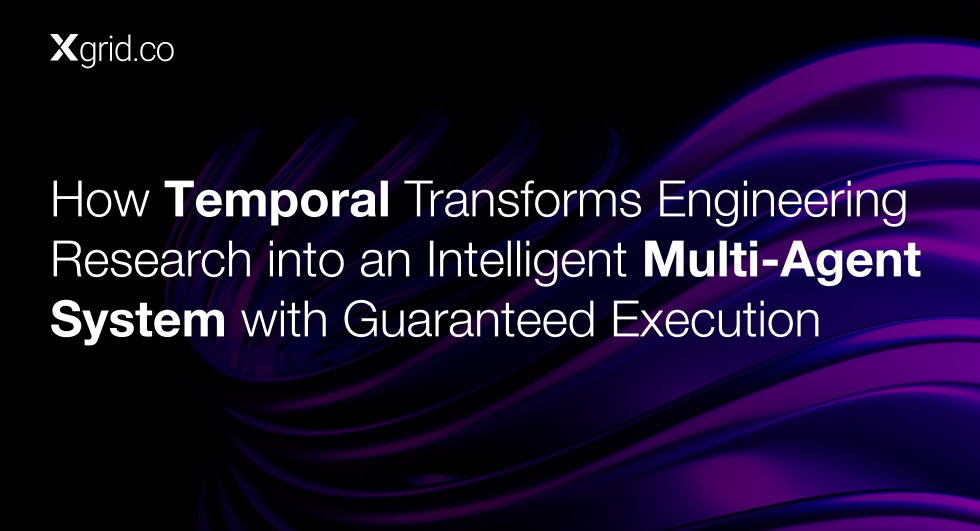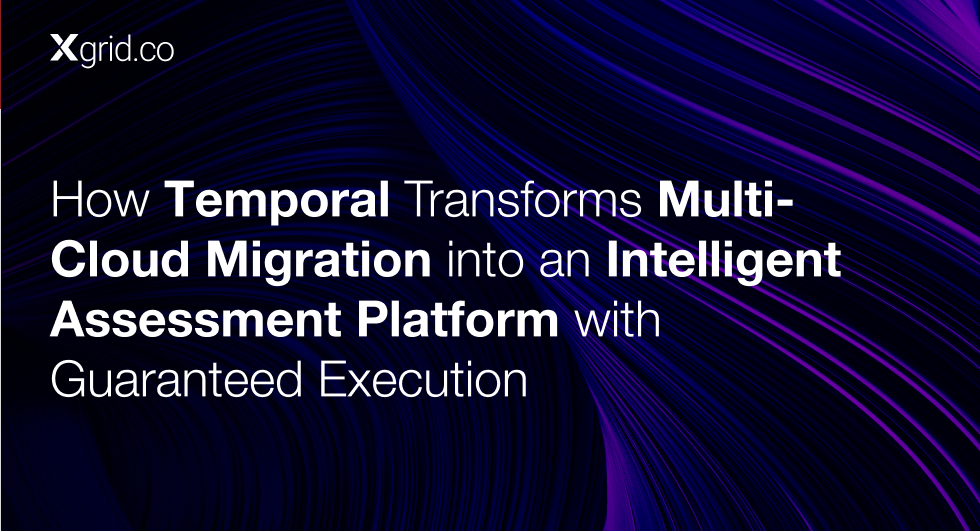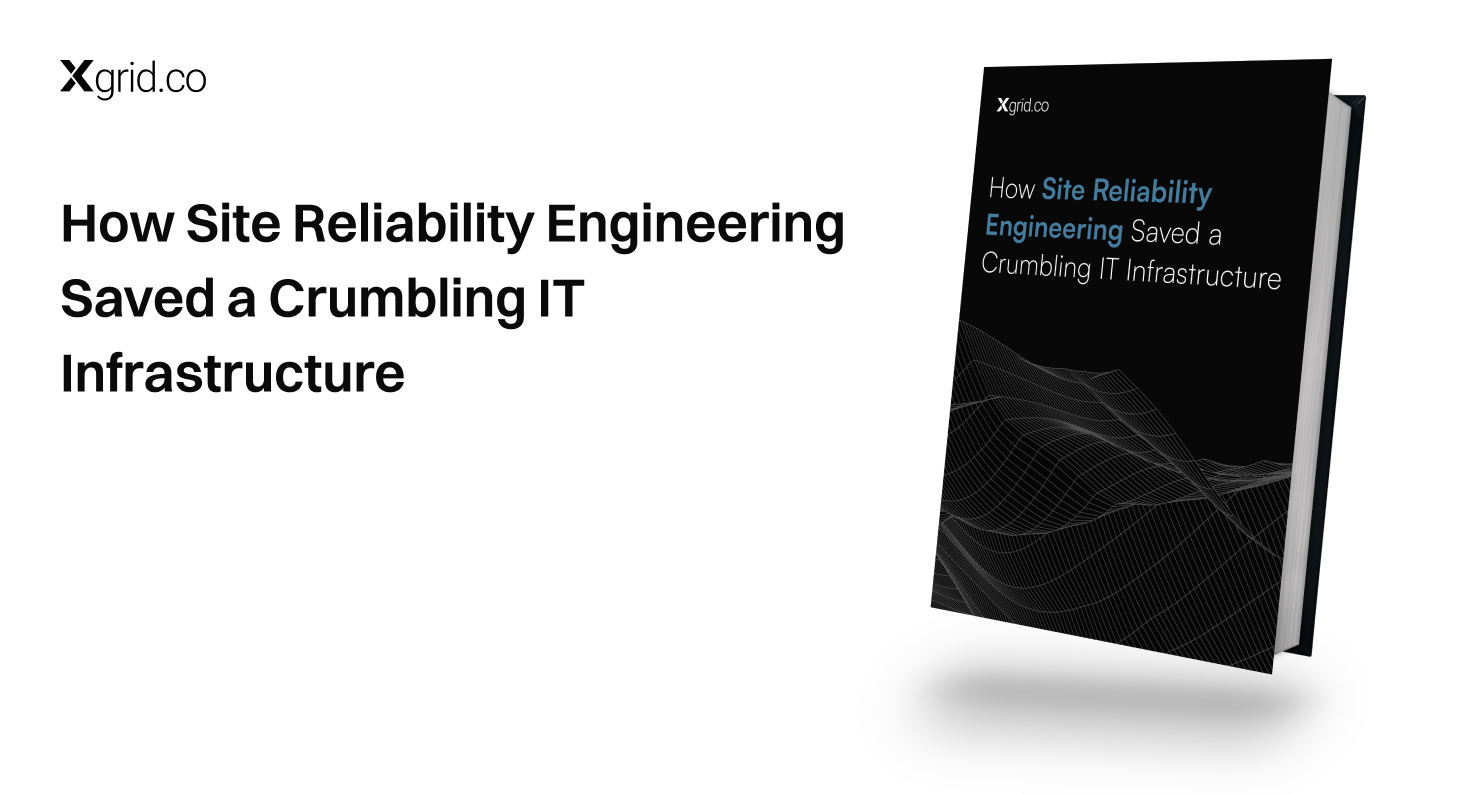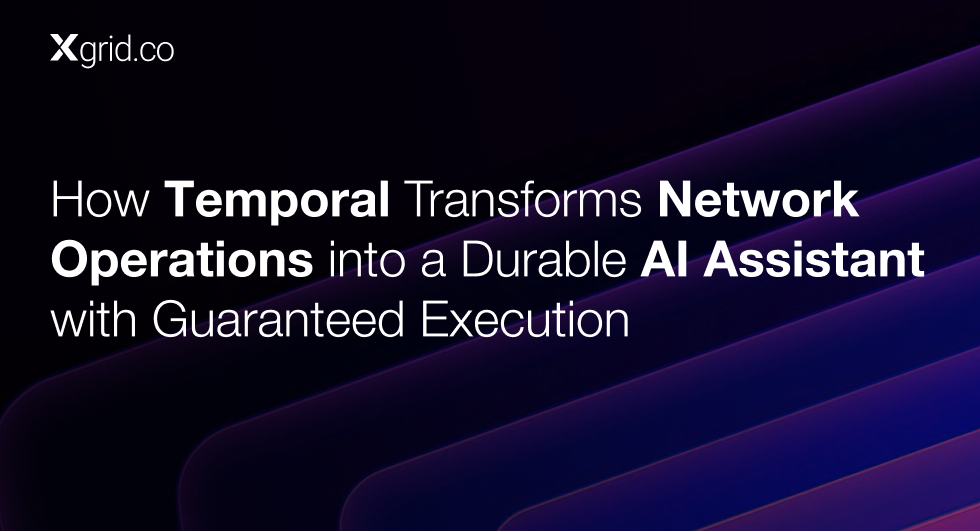Executive Summary
A major enterprise client sought to modernize its legacy on-premises infrastructure and eliminate growing workflow reliability issues. Their existing system struggled with state loss, limited error handling, and minimal observability.
Xgrid’s Solution:
By integrating Temporal Cloud orchestration into a hybrid architecture, we modernized their mission-critical workflows—achieving 99.999% uptime, zero data loss, and fully automated recovery without compromising on-premises security and compliance.
The Challenge
- Workflow Instability: Legacy system lacked durable state and graceful recovery.
- Limited Observability: Troubleshooting relied on reactive monitoring.
- Manual Intervention: Operators frequently restarted or recovered stuck workflows.
- Scalability Barriers: Tight service coupling slowed performance under load.
- Security Constraints: Migration options limited by compliance requirements.
The Solution: Enterprise Modernization with Temporal
1. Temporal Cloud for Workflow Orchestration
- Durable execution ensures workflow survival through crashes and restarts.
- Native retries, timeouts, and DLQ support eliminate custom reliability code.
- Centralized observability for real-time workflow tracking.
2. Hybrid Cloud Architecture
- Temporal Cloud: Managed orchestration, scaling, and availability.
- On-Prem Workers: Sensitive data and logic remain in local infrastructure.
- Secure gRPC Proxy: End-to-end TLS 1.3 encryption and mutual authentication.
3. Security by Design
- AES-256 encryption for all stored data.
- Secrets managed via AWS Secrets Manager with auto-rotation.
- Full audit trail of workflow and secret access events.
- Network isolation and automated certificate management.
Implementation Highlights
| Phase |
Key Deliverable |
| 1. Pilot Selection |
Critical daily workflow chosen for migration |
| 2. Workflow Redesign |
Decomposed into idempotent, retryable activities |
| 3. Security Hardening |
End-to-end encryption, centralized gRPC proxy |
| 4. Testing |
Failure-mode simulations, load & performance validation |
| 5. Observability |
Unified dashboard for workflow metrics and anomalies |
Results: Achieving 99.999% Reliability
Operational Outcomes
- High Availability: Mission-critical workflows survive all failure modes.
- Proactive Monitoring: Early anomaly detection with real-time alerts.
- Simplified Maintenance: Unified visibility into execution history.
- Optimized Resources: Hybrid model balances cloud and local workloads.
- Compliance Alignment: Full encryption, logging, and audit readiness.
Lessons Learned
- Start modernization with high-impact workflows to prove value early.
- Design security first, not as a retrofit.
- Invest in testing and observability—Temporal enables both by design.
- Empower teams with Temporal concepts and patterns to ensure sustainability.
Looking Ahead
The client is now expanding the Temporal-based model to additional workflows. Future initiatives include:
- ✅ Multi-region deployment for global redundancy
- ✅ Workflow analytics for business process insights
- ✅ Deeper integration with enterprise systems
The Xgrid Advantage
- ✅ 99.999% Workflow Reliability
- ✅ Zero Data Loss, Zero Manual Recovery
- ✅ AES-256 + TLS 1.3 Security Layer
- ✅ Hybrid Cloud Architecture
- ✅ Real-Time Observability & Compliance
- ✅ 40% Faster Workflow Execution
- | We turned reliability from a metric into a guarantee.
- | Temporal made five-nines achievable—not by chance, but by design.





